

On our way back from Troodos the other week, we passed this sign:
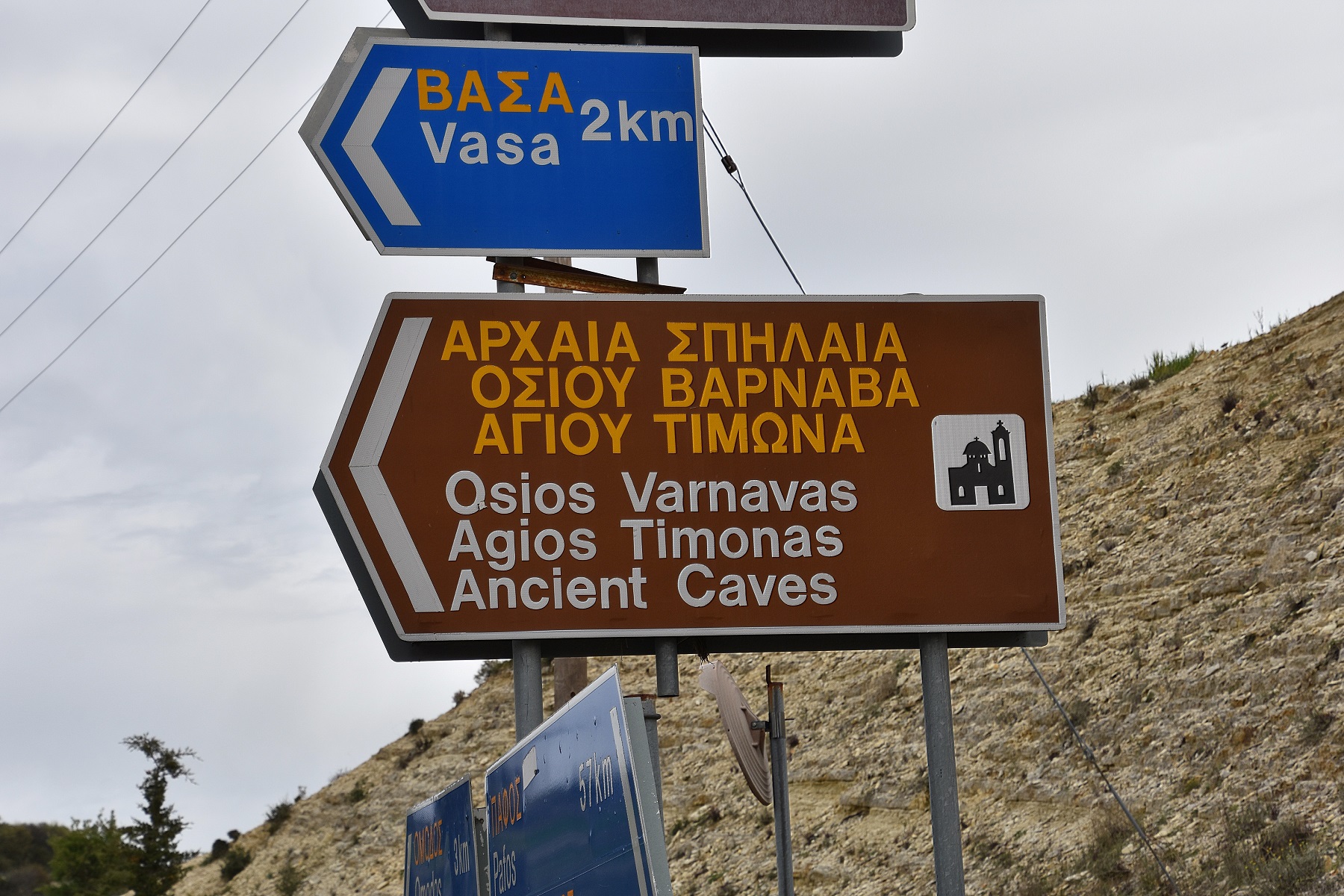
A sign like that is too intriguing to ignore, so at the weekend we followed it to find out what these ‘Ancient Caves’ were like. We got on the F606 and the turn-off was shortly before Omodos. After a brief drive, we saw a big, rustic-looking village on the opposite hill. This was Vasa Koilaniou – and the ‘Ancient Caves’ signs were pointing towards it.
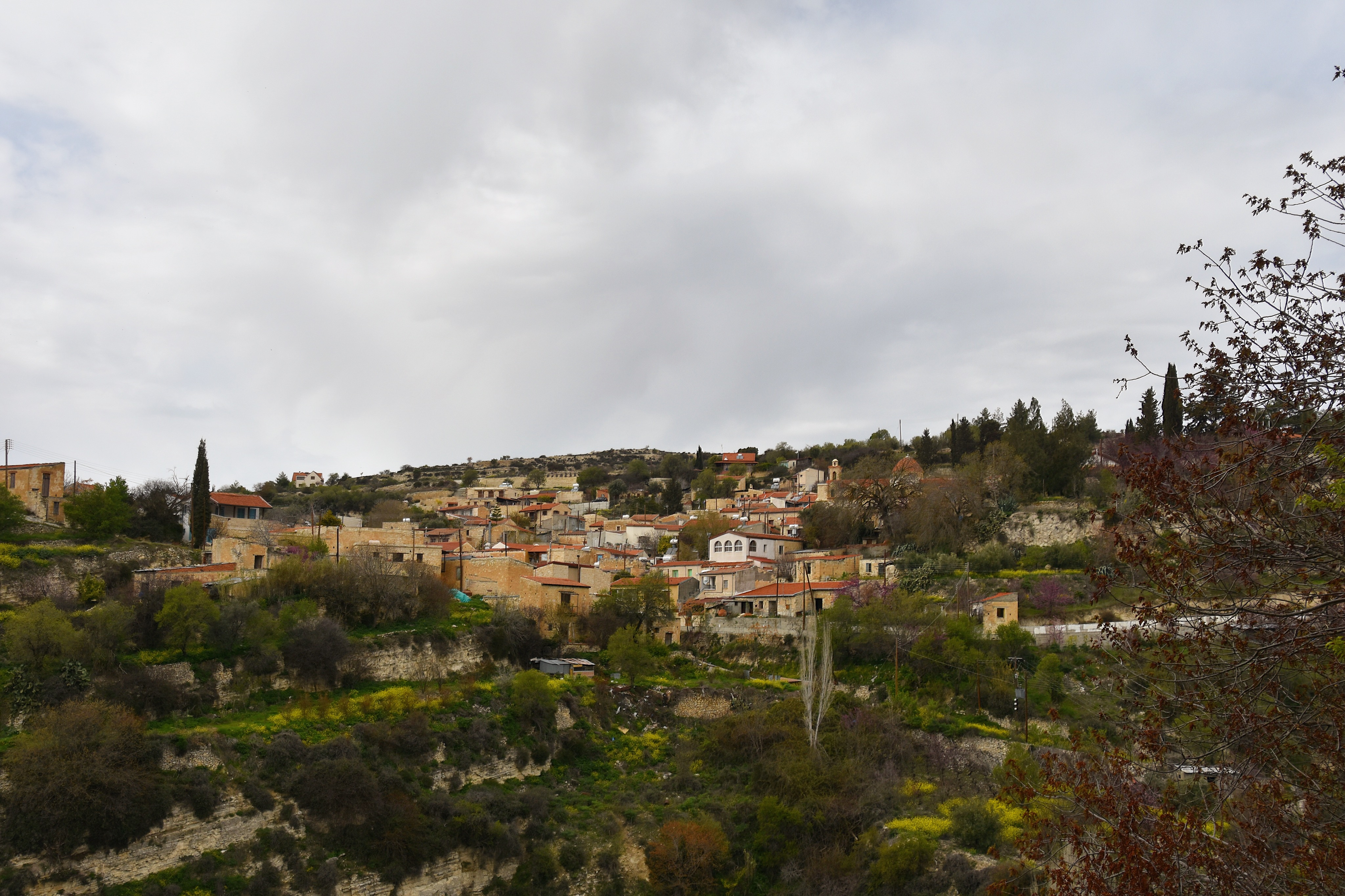
We drove through Vasa and out the other side. And here the signs stopped. We carried on along the Old Road towards Arsos but there were still no signs, so we turned back. On the outskirts of Vasa we met a junction that had a lot of brown (tourist attraction) signs pointing left past the Zivania Museum, so we decided to look up there. We followed the road to the top of the hill, then took a right down a track near a small cliff-face. The track skirted fields and led us out of the village, so we turned the car around. And there, right beside us, was a cave! I don’t know how we missed it.
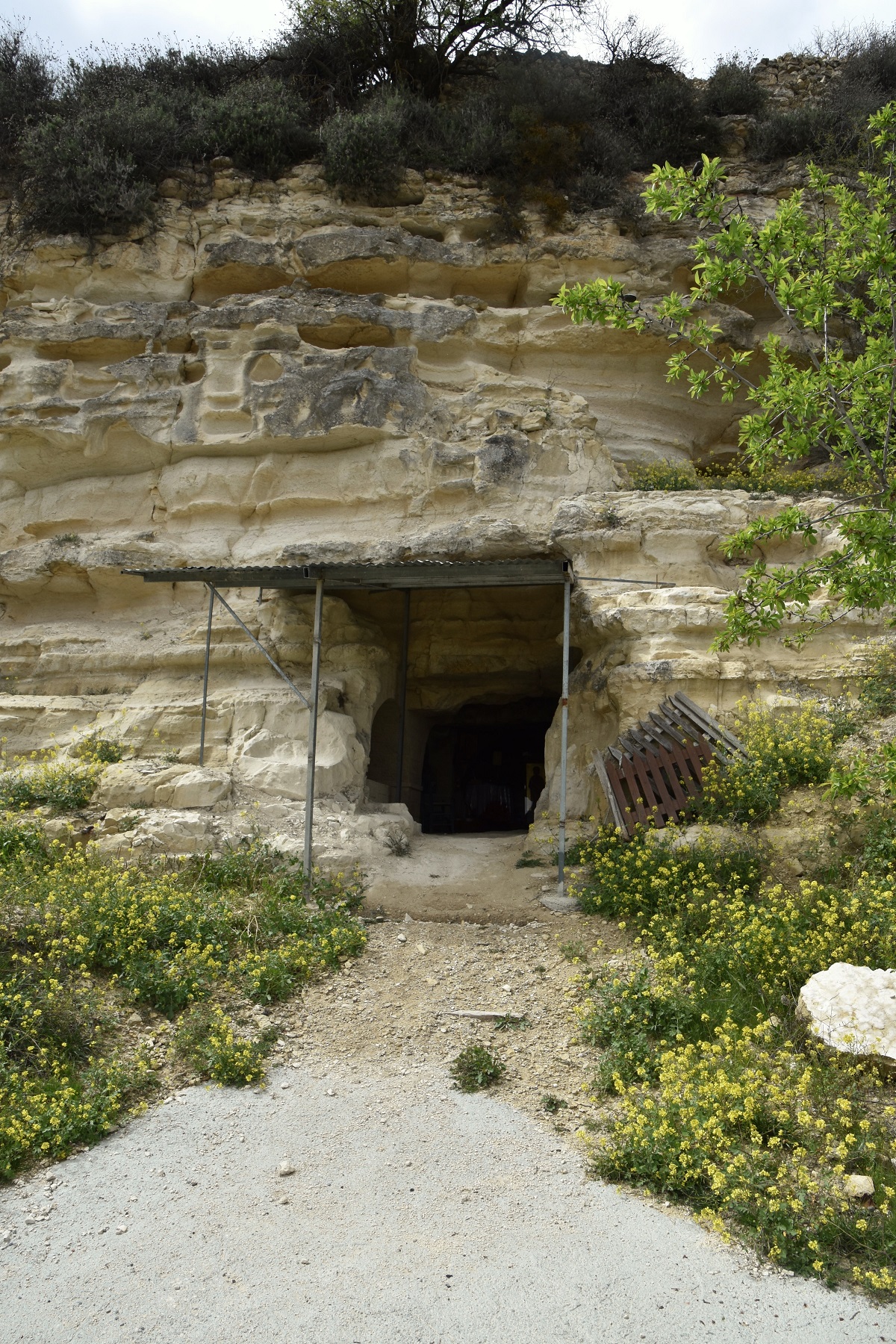
Was this the ‘Ancient Caves’? We got out and had a look. Inside was what appeared to be a shrine, with icons and lit candles.
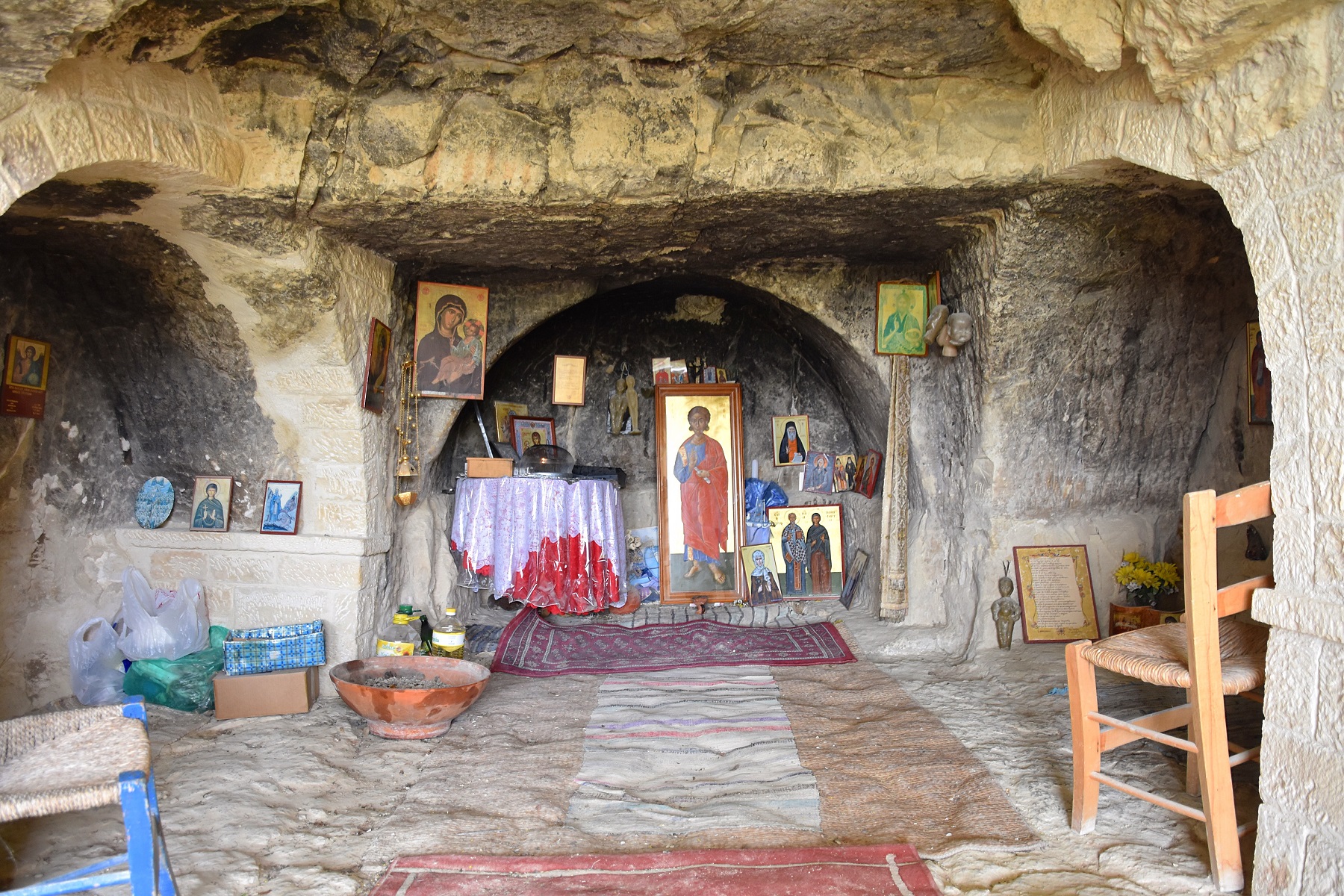
This was the Cave of Apostle Timonas, where apparently five ancient tombs were found. Timona is a saint who is honoured by Cypriots and who they ask for help. The story goes that during the Ottoman rule, women came to this cave to give birth to their babies and receive protection, fearful that the Turks would take their babies.
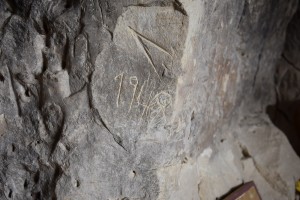
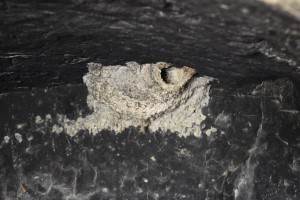
We left, wondering whether this was the ‘Ancient Caves’ in the sign. If it was, the sign used the plural ‘caves’, so could there be more? As I turned to check on Goobie in the back seat, I spotted another cave, just outside of the right window! This one was further up the cliff-face and we could see a short walkway leading up to it.
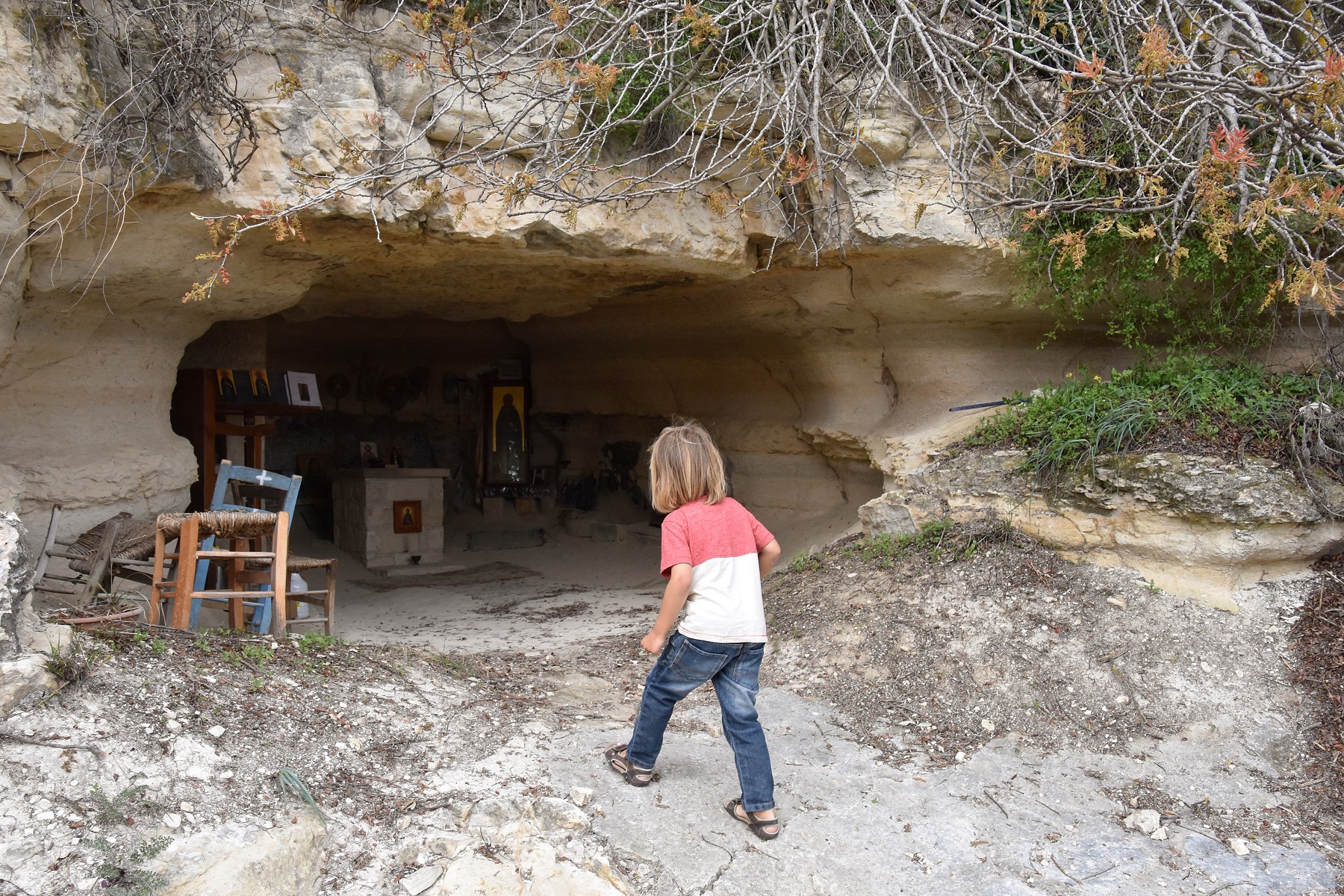
Again, inside was a shrine filled with icons and candles.
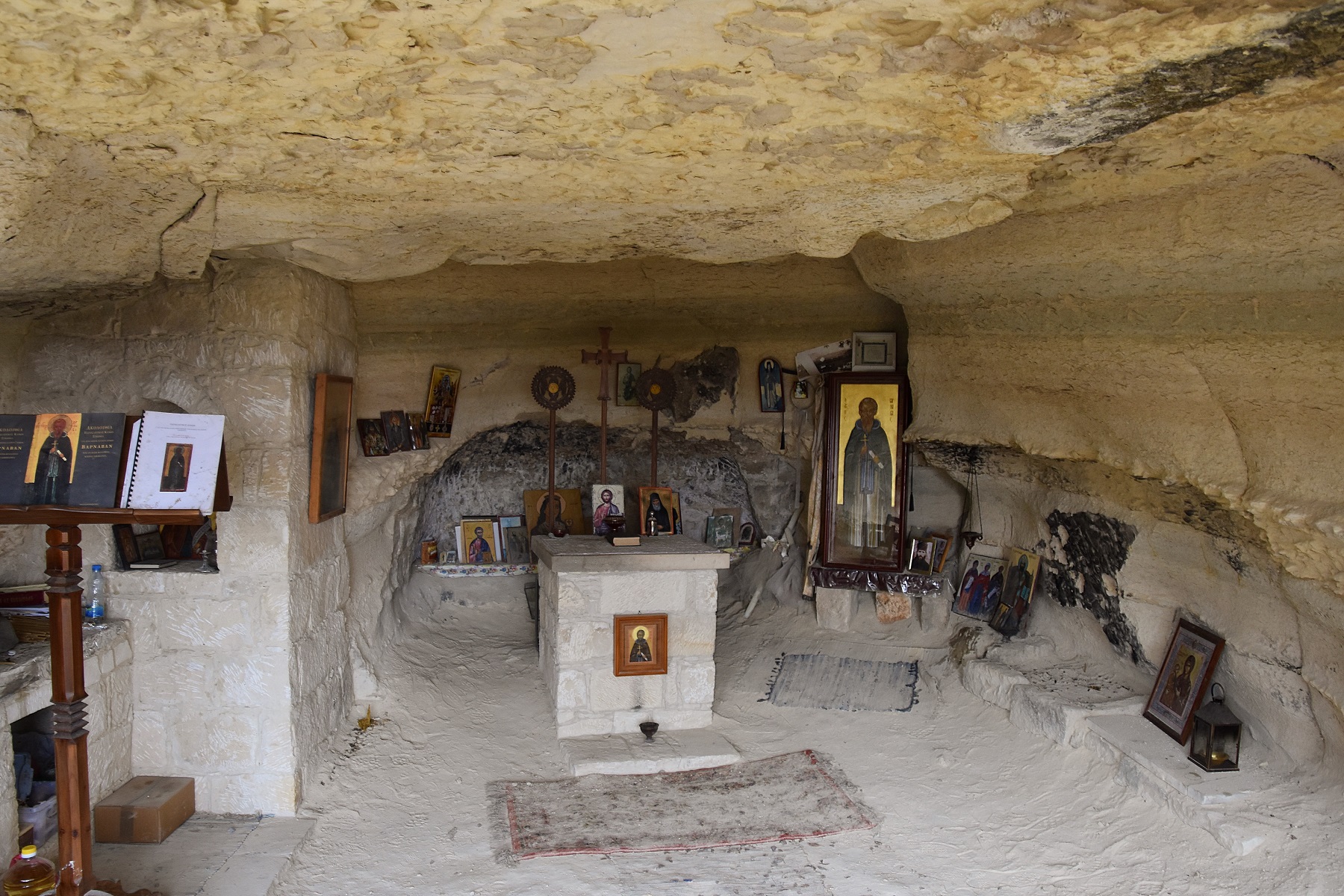
This was the Cave of Apostle Varnava, where Saint Varnavas lived and where his remains were found. His skull is kept in the main church in Vasa, the Virgin Mary of Evangelism. Services are still held here on Easter Tuesday and 11th June, the day of Saint Varnavas.
Just as we were about to leave, I noticed a black and white photo of the cave on one of the icons. I was intrigued about why there would be a photo of the cave inside the actual cave. So I took a photo of it to have a closer look later. I’ve since found out that this is a photo of a miracle. Apparently, the person who took the picture thought that her camera was broken because, when she looked through it, she could see a small golden thread moving in circles. When the photo was developed, there was what appeared to be a waterfall of divine light falling over the cave.
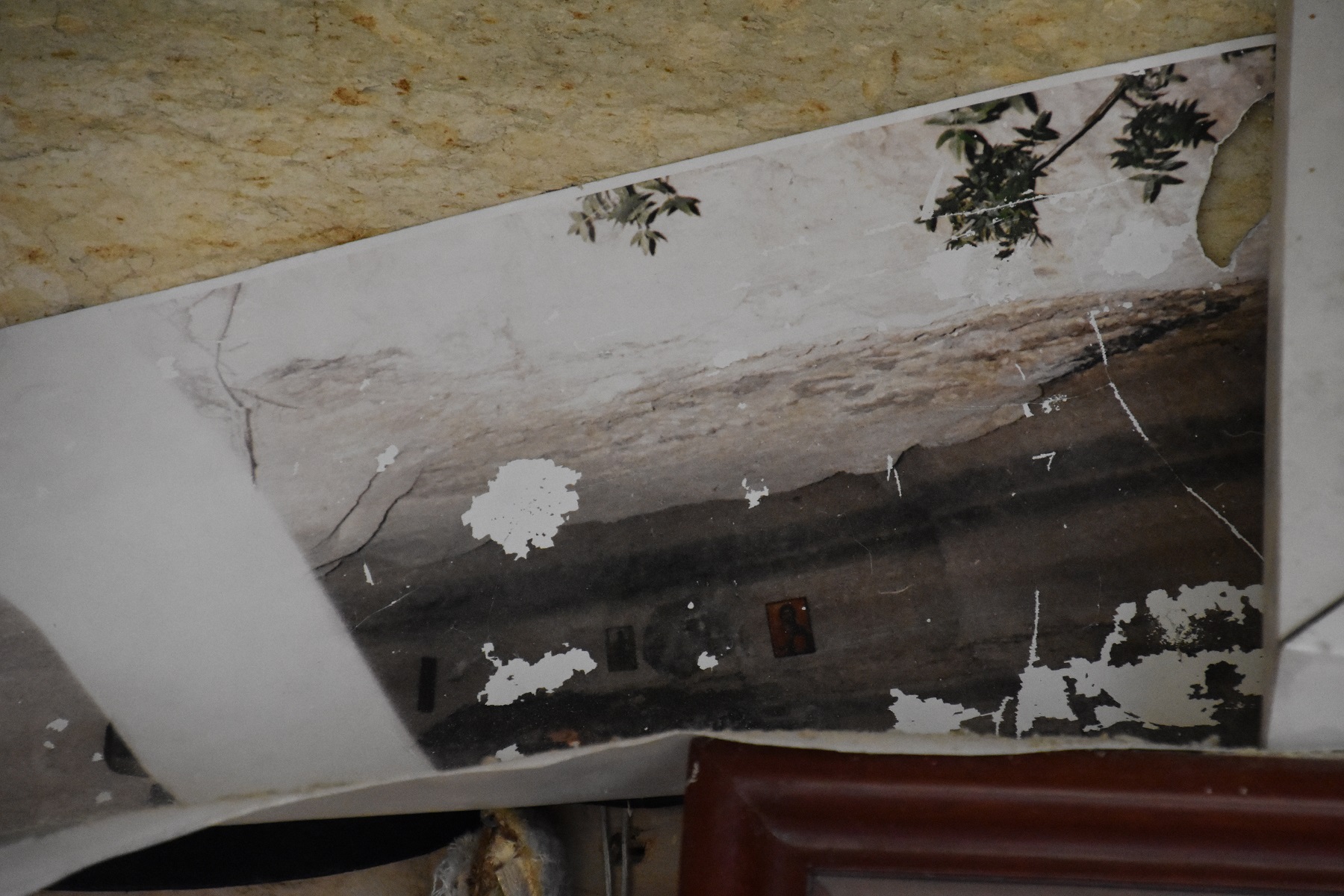
Having found the ancient caves, we headed into Vasa for a coffee at the tavern To Palati. The people who run it were friendly and gave us complimentary cakes and fruit with our drinks. It was in a tranquil spot in the heart of the village, surrounded by pretty cobbled streets.
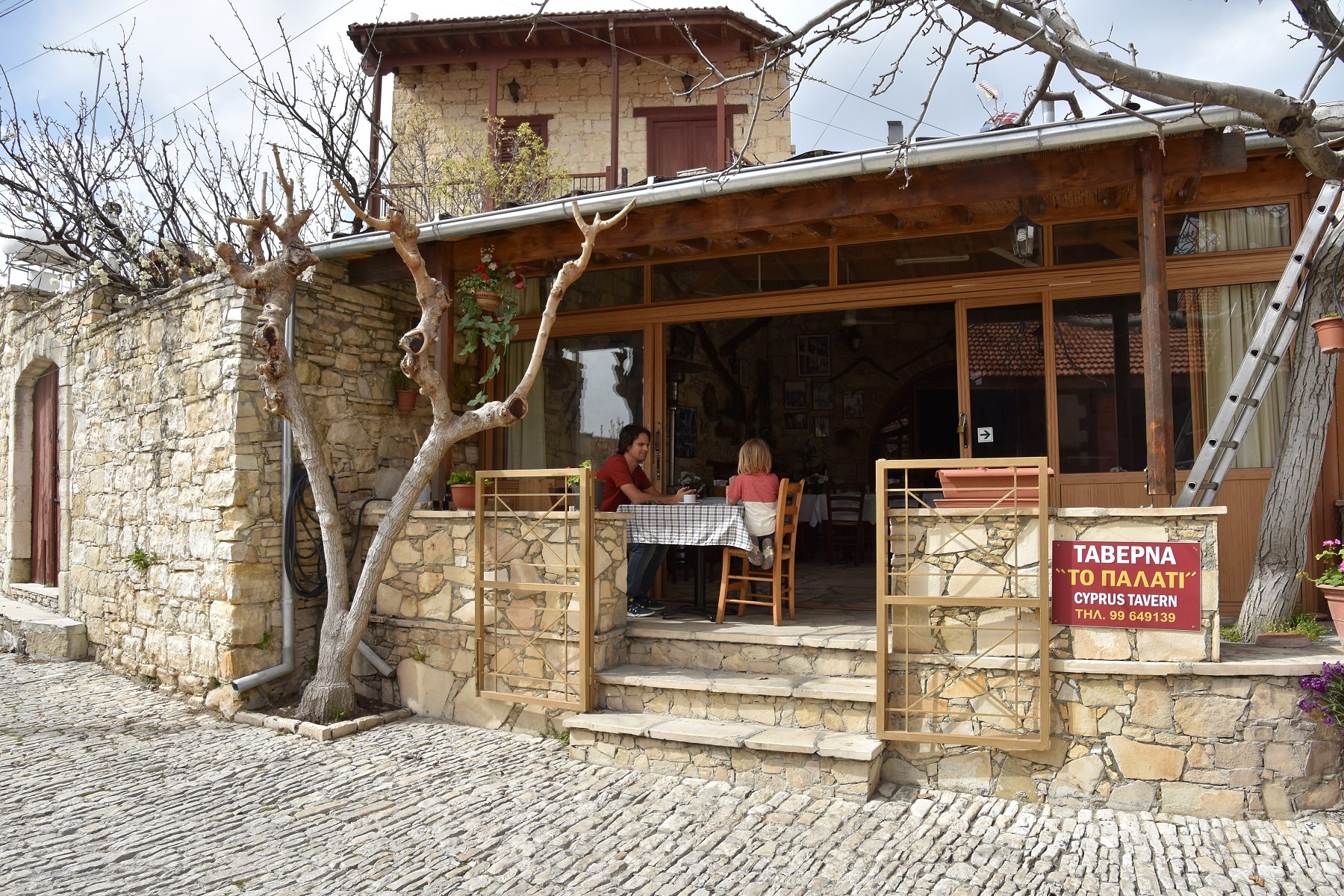
We took a walk around Vasa, enjoying the labyrinthine streets. Vasa means ‘wooded valley’ in Greek and is a wine-producing village, with vineyards on every side. It was almost totally empty, though I can imagine it’s very popular in the summer. It has a number of museums, including the Zivania Museum, the Museum of Education and the Ecclesiastical museum. It also has a good website with lots of local info. Cyprus was having a rare overcast day on Saturday and the light wasn’t great, so my photos do not do justice to how pretty this village is.
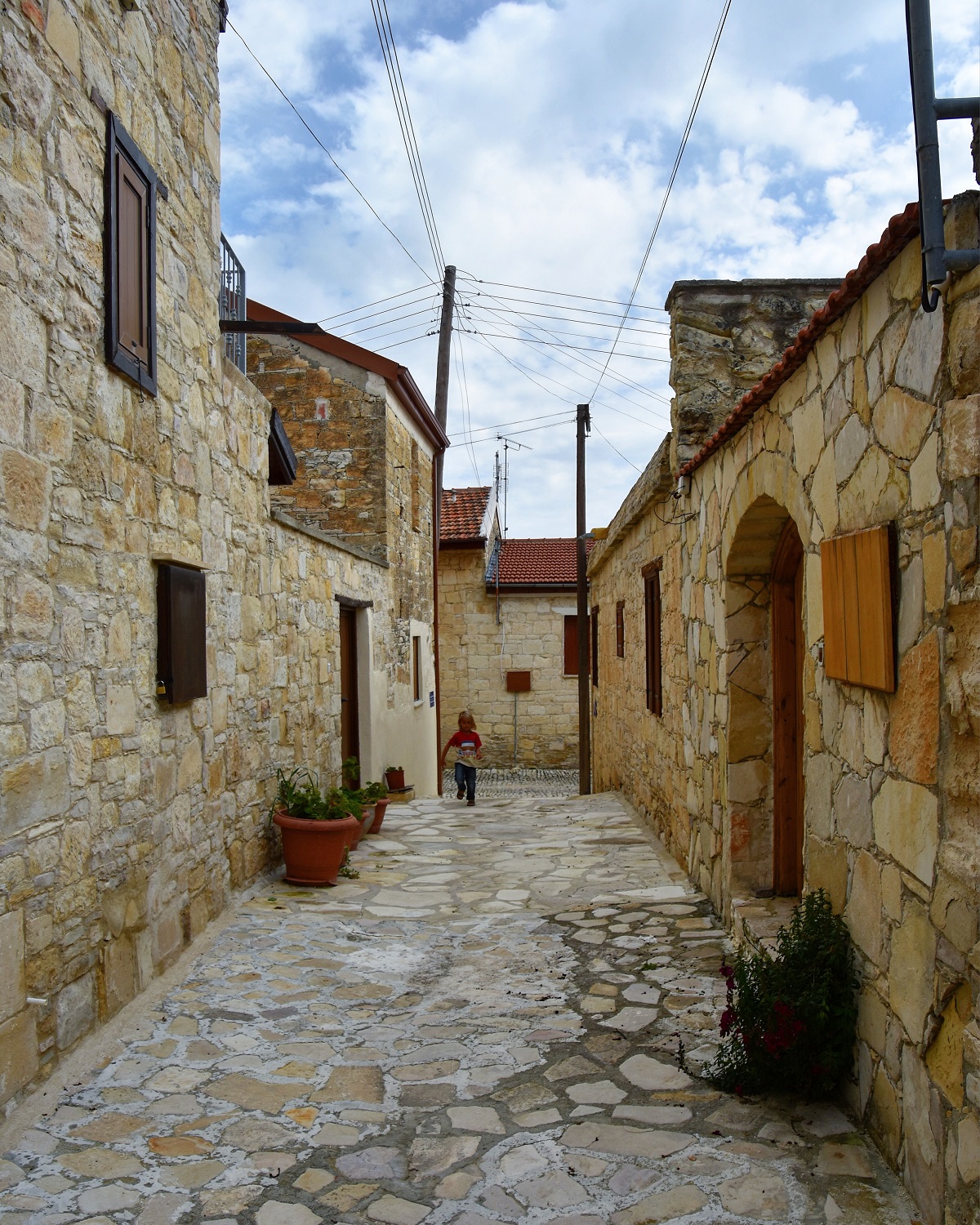
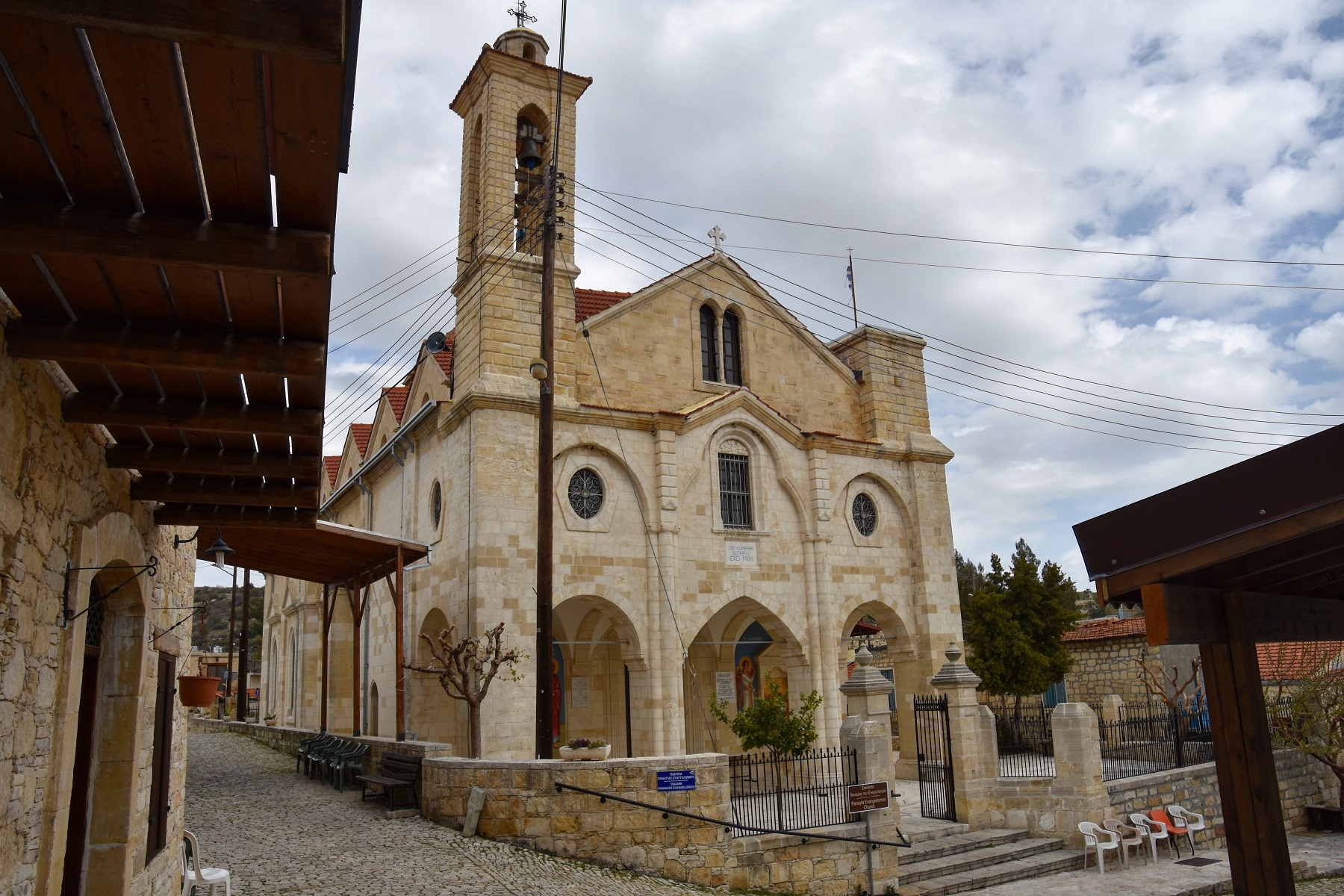
As we drove out of the village, we noticed a tiny church nestled into one of the hillside bends. We got out of the car for a closer look and were lucky to find that it was unlocked. We opened the door to a wonderful surprise – this was a painted church.
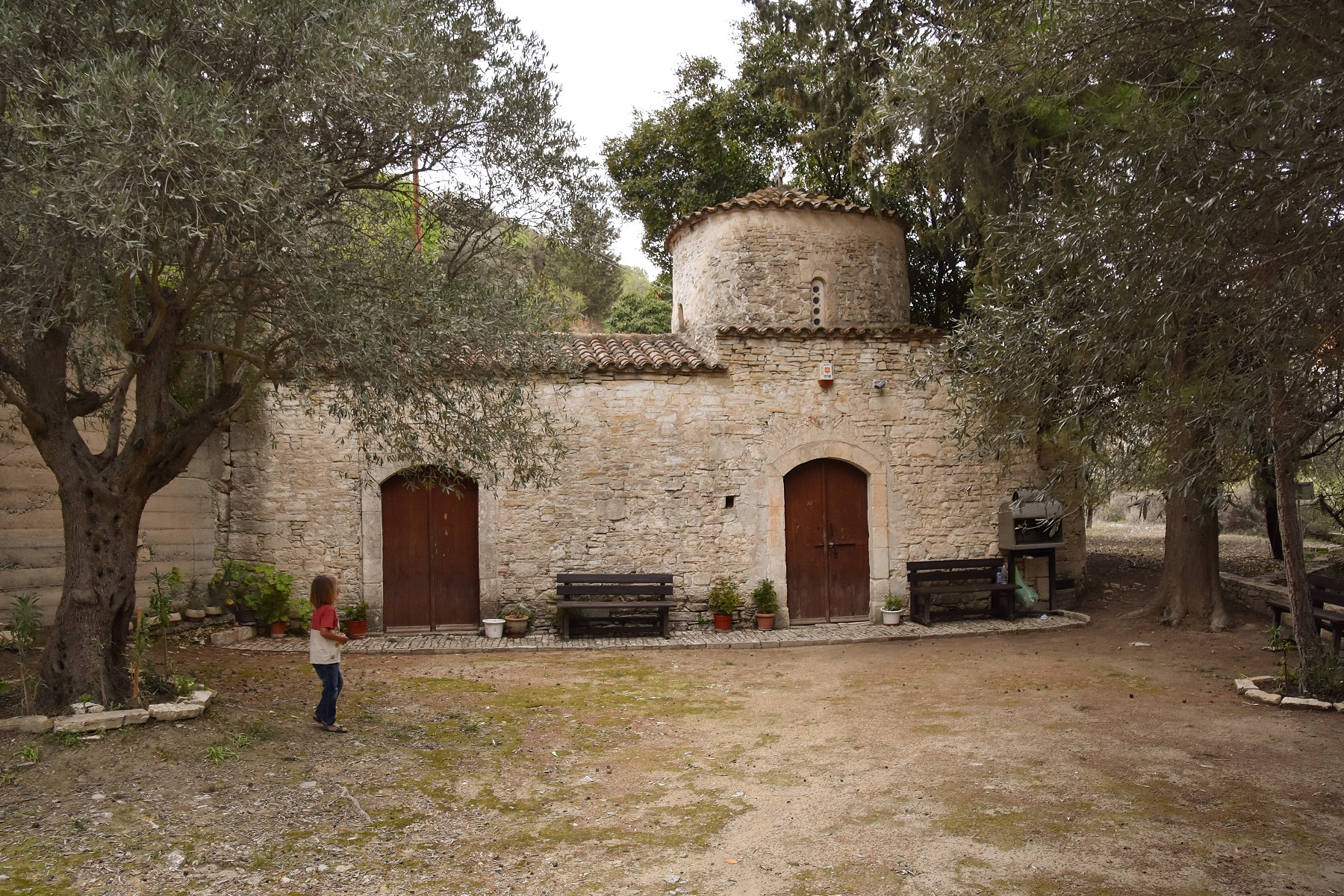
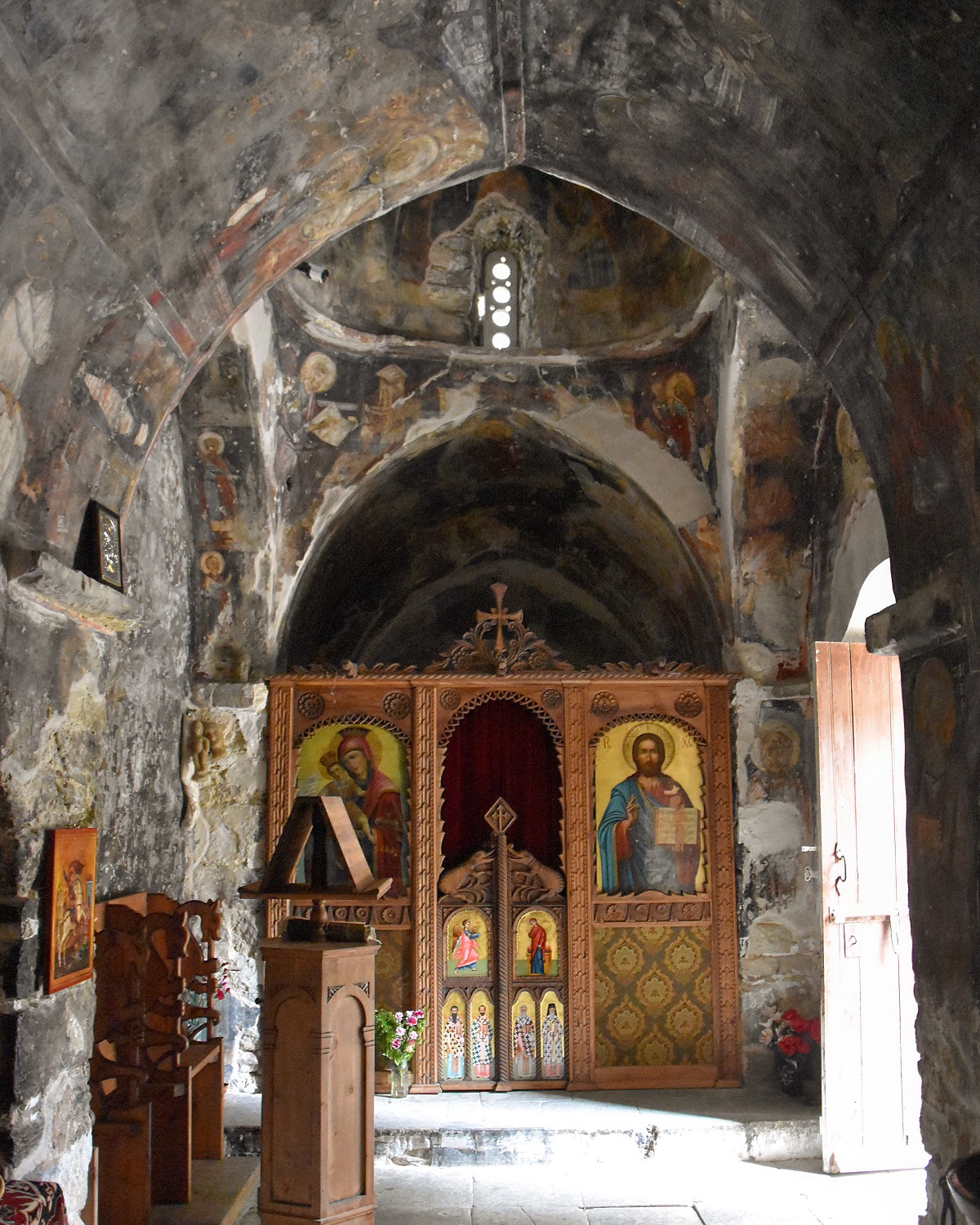
We were in the Agios Georgios Chapel, a 14th century Byzantine church. Its 15th century frescos depict Christ, St George on horseback and the mother of St George, among others. Sure, they weren’t in as good a condition as the UNESCO churches we’d seen in Troodos the other week. However, what made them special for us was the fact that we’d never heard of this church before. It isn’t in our Lonely Planet guide or in various other tourist literature we’ve read. We’d discovered it for ourselves. It wasn’t at all touristy, but clearly still in use and beloved by its community.
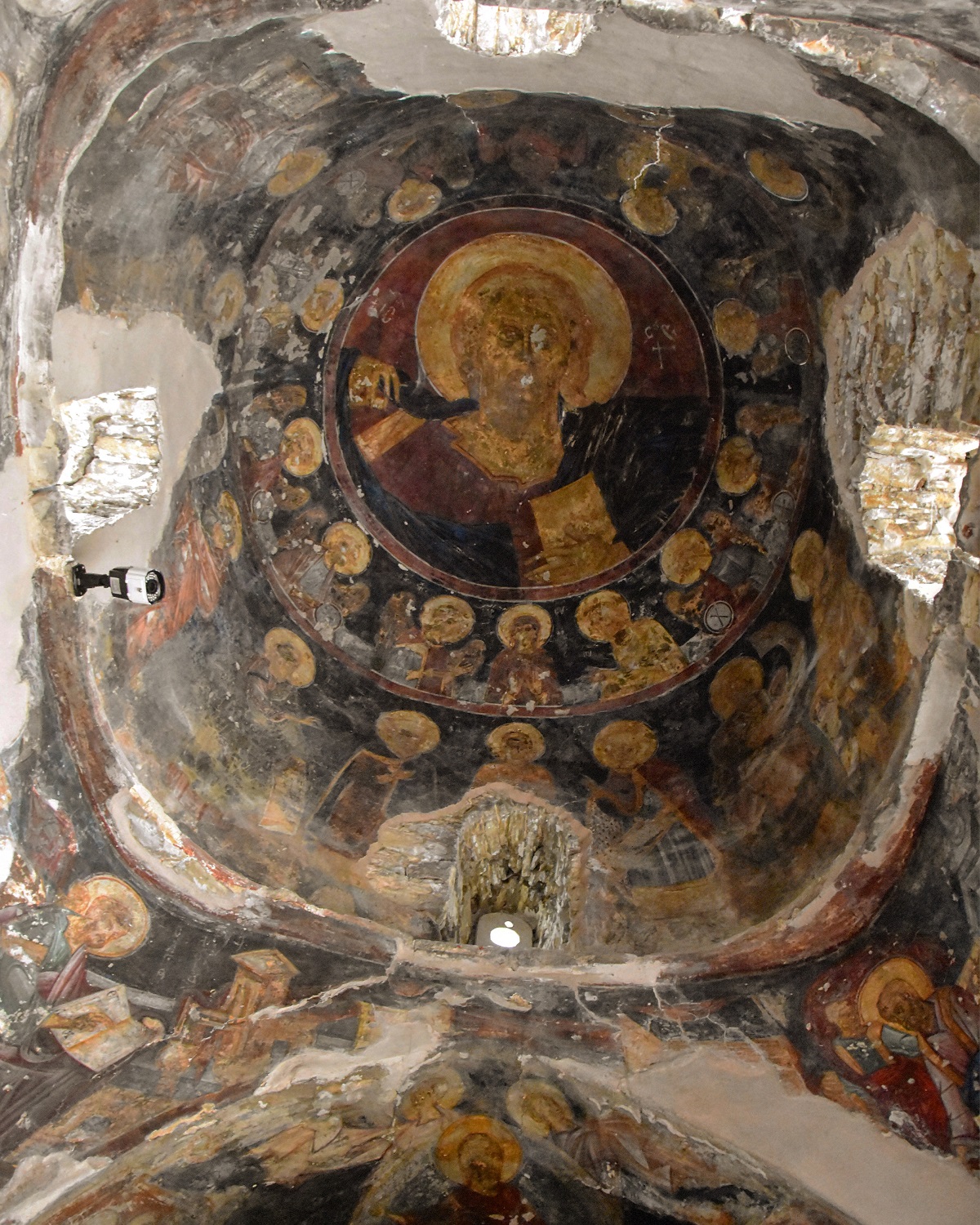
There was a little brook running along the side of the church and we took Goobie to see the miniature waterfalls. We noticed that a pathway followed the brook in the direction of a gorge squeezed between two hills. We followed the path for half an hour, through woodland, past collapsed vineyard terraces, and old orchards. There were benches along the way to have a rest. After walking for 20 minutes we reached a double-arched bridge, aptly named the Old Stone Bridge.
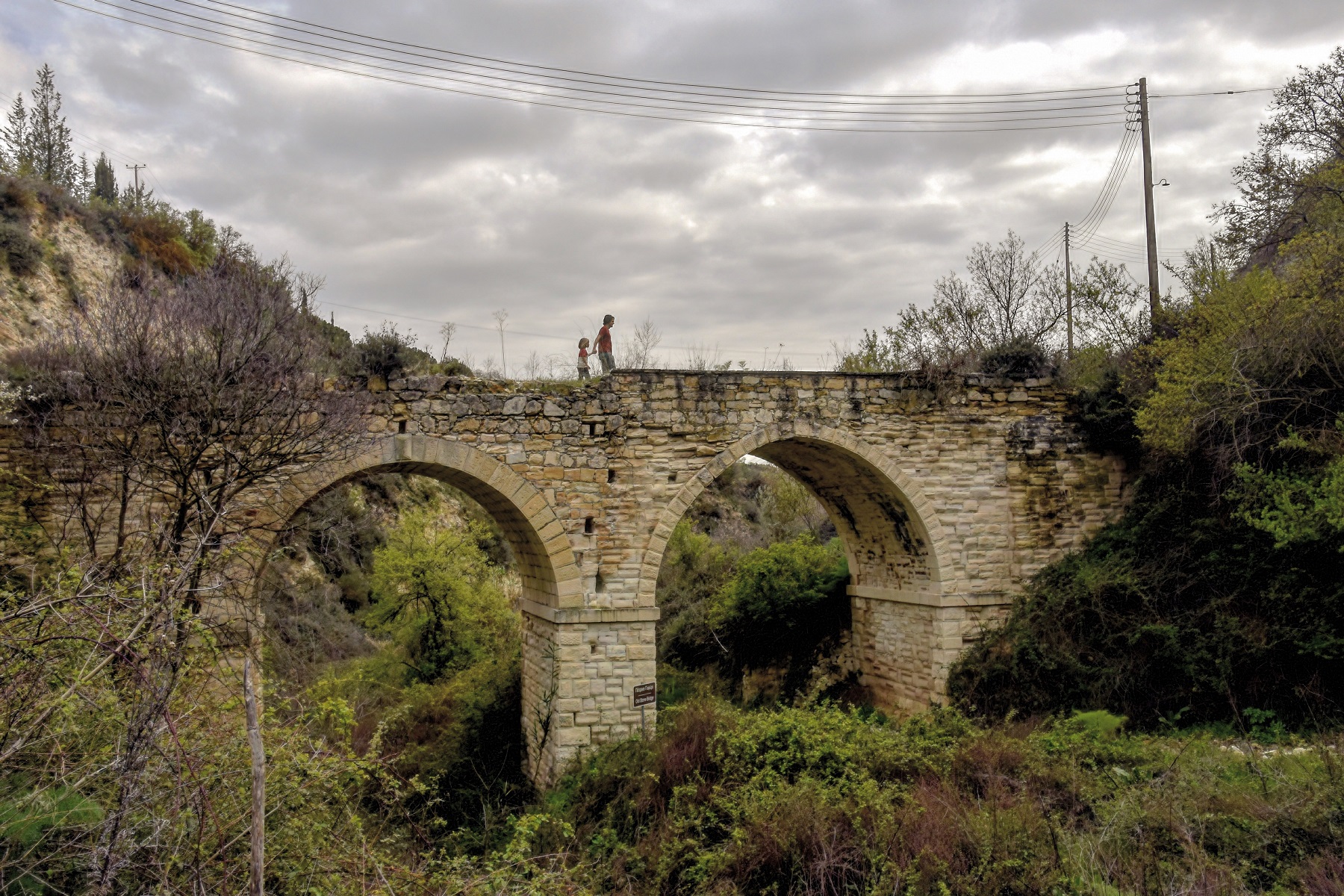
It was clear that these were popular rambling trails, though unfortunately our rambling for today was done and it was time to head back home.
We’d started the day in search of ancient caves, but we’d found more than we’d expected; a beautiful village that we will certainly visit again, a surprising painted church and a woodland walk. That’s what I love about Cyprus – you start off looking for one thing, but you are guaranteed to find a whole lot else too.
Leave a Reply